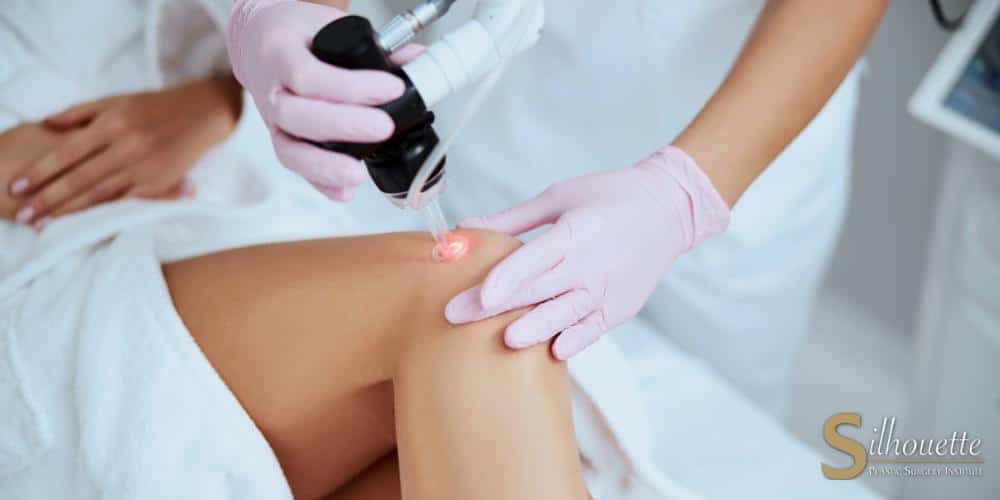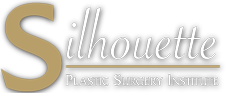Dr. Hootan Daneshmand
Spider Vein Treatment
Spider Vein Treatment in Bakersfield, CA
If you’ve noticed new varicose veins or spider veins pop up across your body – especially on the lower legs – you’re not alone. Thousands of Americans – mostly women – struggle with the appearance of spider veins. They’re generally not painful like varicose veins are, but they can definitely be devastating to someone’s self-confidence. If you’re looking to remove your spider veins so that you can wear shorts and bikinis with confidence, spider vein treatment may be the best option for you. Call 949-359-8397 to schedule an appointment at our Bakersfield Med Spa today.
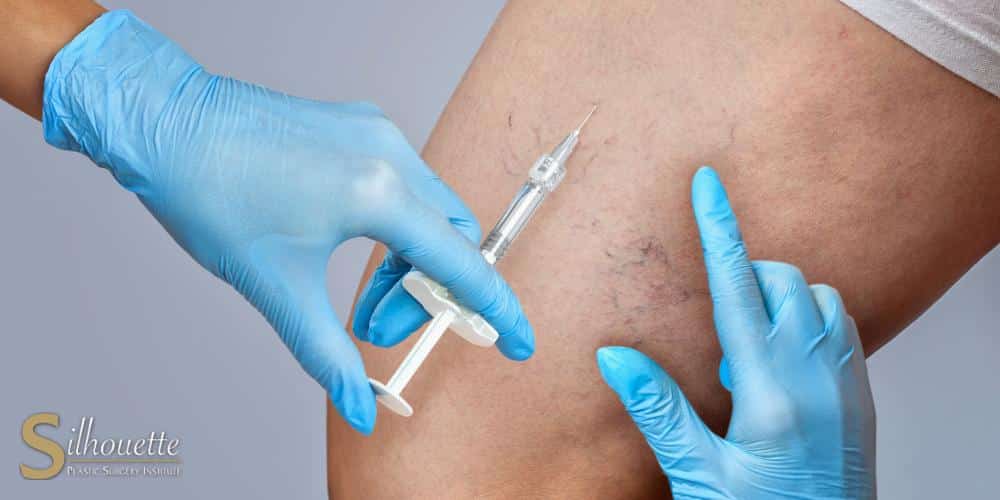
What are Spider Veins?
Spider veins – medically known as telangiectasia – are dilated, tiny blood vessels that can be seen through the skin. They typically resemble spider webs, hence the name. Spider veins are generally not painful, and are most common on the lower legs. Telangiectatic leg veins can be red, purple, or blue, and can pop up on any part of the body.
Spider Veins vs. Varicose Veins
Varicose veins and spider veins are similar, but different. Varicose veins are large swollen blood vessels that are far more noticeable and painful than spider veins. Healthy veins will lay straight under the skin while varicose veins twist and turn under the skin. This twisting and turning of the veins is very noticeable and most common on the lower legs.
Despite the differences between the two types of veins, spider vein and varicose vein treatment is often the same.
What Causes Spider Veins and Varicose Veins?
Varicose veins and spider veins are generally caused by:
- Genetics (if there is family history of varicose veins and spider veins, you may have them too)
- Jobs that require people to stand for long periods of time such as teaching, hair styling, nursing, factory work, etc.
- Long-term obesity
- A medical history of blood clots
- Drastic hormonal changes during puberty, pregnancy, and menopause
- Hormonal birth control methods
- Hormone replacement therapy during menopause
- Anything that increases abdominal pressure such as girdles, constipation, tumors, etc.
- Major damage/injuries to the skin’s surface
- Previous vein surgery
- Aging
Women are far more likely to suffer from varicose veins and spider veins than men. Both varicose veins and spider veins are very common and affect approximately 30% to 60% of adults.
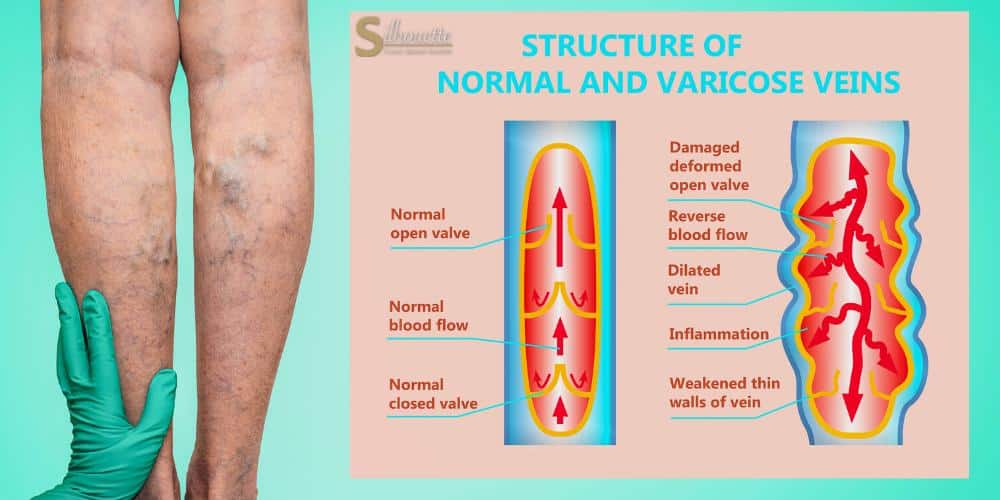
Spider Vein Treatments
There are many ways to treat varicose veins and spider veins. Smaller varicose veins may just need minimally invasive treatment while larger varicose veins may require more invasive treatments. Be sure to meet with your doctor to discuss which treatment options are best for you and your problem veins.
Sclerotherapy
The most common treatment for both varicose veins and spider veins is sclerotherapy. During this medical procedure, a doctor will first find the correct vein through a doppler ultrasound device. Then, they will inject a solution into the problem vein which will make it collapse and form a scar. This scar tissue essentially creates a “sealed vein,” so blood cannot flow through it. Instead, blood flow will reroute to healthy veins. Over the next few weeks or months, the collapsed vein will slowly disappear.
Some people may need to undergo multiple treatments, especially for larger veins. Overall, though, sclerotherapy is a quick, effective, and minimally invasive way to treat spider veins and varicose veins. In fact, most patients can go home and rest the very same day of the procedure.
Laser Treatment
Another common spider vein and varicose vein treatment is laser therapy which is also quick, effective, and minimally invasive. Basically, the laser light creates heat which damages affected veins. This makes the vein slowly fade over the course of a few weeks. Smaller veins may disappear immediately following the laser treatment while larger veins disappear at a slower rate.
Catheter-Based Procedures
Common examples of catheter-based procedures are endovenous laser treatment and radiofrequency ablation.
Endovenous laser treatments may be better suited for people with large, painful varicose veins. This type of laser treatment is a bit more invasive than the aforementioned one, because doctors have to insert a small laser fiber into the affected vein. This laser will cause the vein to collapse and eventually disappear. An endovenous laser procedure is generally an outpatient procedure that requires local anesthesia.
Radiofrequency ablation is a similar procedure. A doctor will insert a tiny catheter into the vein which will deliver radiofrequency energy. This energy will heat and weaken vein walls so that they collapse and seal shut. Again, this is generally an outpatient procedure performed under local anesthesia.
High Ligation and Vein Stripping
High ligation and vein stripping are both surgical procedures reserved for large, painful varicose veins. Ligation is basically just tying off a vein, while stripping involves the removal of a problem vein segment.
Ambulatory Phlebectomy
Another surgical option is an ambulatory phlebectomy. During this outpatient procedure, a vascular surgeon will remove varicose veins through a series of tiny punctures on the skin surface. The treatment area will be numbed, and local anesthesia may be required.
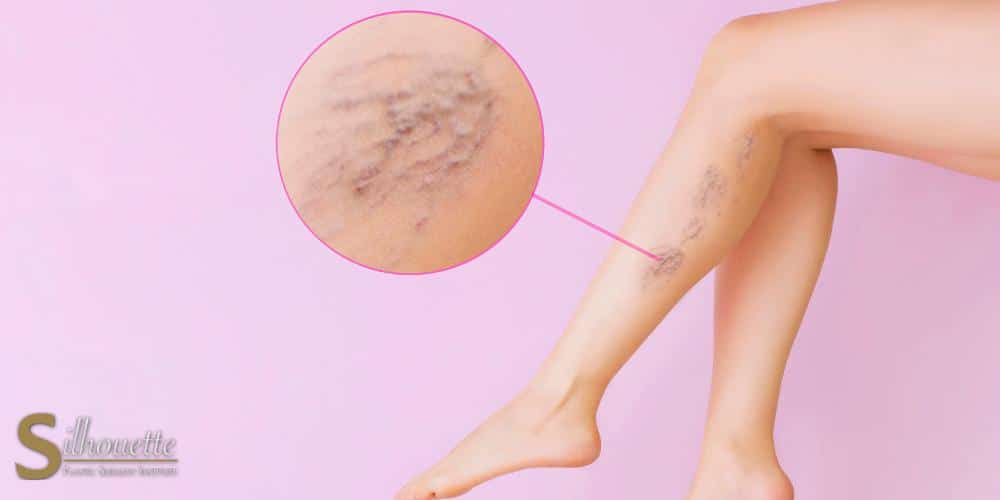
Who is a Good Candidate for Spider Vein Treatment?
You may be a good candidate for varicose vein or spider vein treatment if you have several veins that are noticeable, painful, and damaging to your self-confidence. You may not be a good candidate for varicose vein and spider vein treatment if:
- You have superficial or deep vein thrombosis (AKA: when a blood clot develops in deeper veins),
- You are pregnant or breastfeeding,
- Or you are bedbound/immobile.
Many people think that you can’t receive treatment for varicose veins and spider veins if they’re on hormonal birth control pills, but this isn’t true. You can still receive treatment, but you may be at a higher risk of developing new spider veins or varicose veins in the future.
Additionally, be sure to tell your doctor if you have a history of blood clots. Depending on the cause and severity of the blood clot, you may be discouraged from undergoing vein treatment, even if you don’t currently have a blood clot.
Risks and Complications of Spider Vein Treatment
Because sclerotherapy is the most common treatment to improve the appearance of spider veins, we will only be discussing the risks and complications of this treatment.
Risks and complications of sclerotherapy include:
- Larger injected veins may turn hard and lumpy over time
- Permanent brown lines or spots at injection sites
- Redness at the injection site
- Bruising, which can last several weeks
- General tenderness at the injection site
- New spider veins may appear after treatment
- Allergic reactions to the injectable solution which may cause itching and swelling
The aforementioned risks are relatively minor and temporary. On rare occasions, people can suffer major complications such as swelling around the groin, new ulcers at the injection site, red streaking in the groin area, and major swelling in the leg. If you experience any of these complications after sclerotherapy, please seek immediate medical care.
Spider Vein Treatment Cost
According to RealSelf – a site where plastic surgery patients across the U.S. discuss the details of their procedures – the average cost of sclerotherapy is $750. This price will definitely vary depending on your geographic location, your surgeon’s experience, and how many spider veins you need treatment for. Other more invasive procedures may have a larger price tag.
Additionally, it’s important to keep in mind that health insurance will not cover spider vein treatment if you’re doing it purely for cosmetic reasons. That’s because cosmetic procedures are considered elective, unnecessary procedures. If you’re undergoing treatment for severe varicose veins, however, you may be able to receive health insurance coverage. That’s because large varicose veins can be incredibly painful and disruptive to someone’s life. Therefore, the treatment would be necessary.
Non-Surgical Treatments for Spider Veins
There are several “at home” treatments that can prevent or improve the appearance of spider veins.
Wearing compression stockings is a great way to both prevent and treat varicose/spider veins. The compression stocking will squeeze the legs which will encourage adequate blood flow.
General self-care such as exercising daily, eating healthy foods, limiting sodium, raising the legs, and trying non-hormonal birth control options can also help spider veins.
